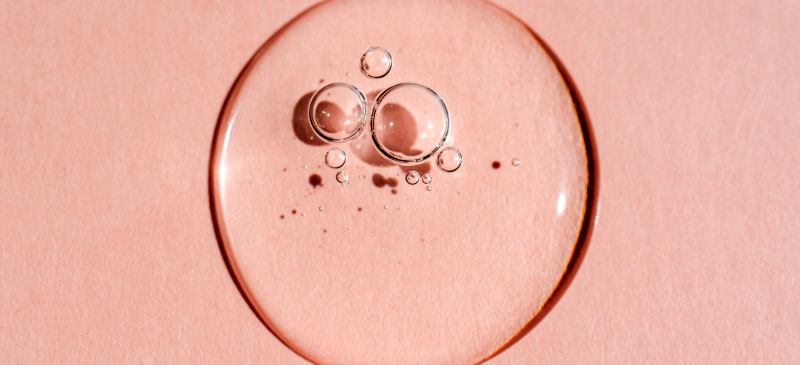
If you consider yourself to be “in the know” on the latest skin care ingredients, one multifunctional facial acid you’re bound to come across is succinic acid.
What does succinic acid do for skin? It’s best known for its acne-fighting abilities, but other reasons to add this powerhouse acid to your routine include because it defends against signs of aging as well as dullness and irritation.
Where will you find succinic acid? Look for it in facial serums intended to prevent wrinkles, acne treatments and some masks or lotions.
What Is Succinic Acid?
Succinic acid (SA) is a type of antimicrobial facial acid that’s used in skin care products to clear and brighten the skin. It also has anti-inflammatory and antioxidant effects — plus it can help soothe irritated skin.
SA is considered similar to another very popular facial acid: hyaluronic acid. While hyaluronic acid is used most often for its hydrating and plumping effects, SA is used to remove bacteria from the pores and manage breakouts.
What is the other name for succinic acid? It’s sometimes also called butanedioic acid.
Where does SA come from? It’s naturally found in some plants and even in animals tissues, much like acids such as butyric acid (found in some foods containing fat, such as butter and ghee).
When used in skin care products, SA is typically derived from amber or sugar cane. It can be created via the hydrogenation of maleic acid.
Not only is it used in skin care, but it’s also found in some supplements and drugs and used in agricultural and food production.
Benefits
Succinic acid benefits are vast considering it possesses antimicrobial, anti-inflammatory and antioxidant abilities. Whether you’re acne-prone or hoping to fight wrinkles and other signs of aging, here are some of the main reasons to use succinic acid on your skin:
1. Can Help Clear Acne
Unlike some other acne treatments and acids, SA helps fight acne and blackheads without causing irritation. It can prevent breakouts due to its ability to kill bacteria and yeast that can be hiding inside pores.
Is succinic acid good for cystic acne? Because it also works as an anti-inflammatory agent, it may be able to help reduce the severity of cystic acne breakouts.
What’s more, it can help balance skin and treat multiple problems — such as redness, tenderness and oiliness — among those with conditions such as acne, eczema or psoriasis.
2. Soothes Skin and Reduces Inflammation
One cool attribute that SA has is that it’s similar to your skin’s own natural oils. This means it can help hydrate and treat irritated, dry or inflamed skin without contributing to excess sebum (oil) production.
It’s known to support wound healing and even has some pain-dulling effects, meaning it may make skin rashes or pimples less painful.
READ RELATED: Why Do I Have 1 to 3 Sharp Little Chin Hairs That Just Keep Coming Back?
3. Has Antioxidant and Anti-aging Effects
Due to its antioxidant properties, SA can help slow down signs of aging — such as dark spots, dullness and fine lines— by protecting skin against free radical damage. It also assists in cellular turnover and renewal, which can leave skin looking for refreshed, firm, even and bright.
How to Use
Most people can use SA daily without experiencing irritation. While each type of product containing SA works a bit differently, it should generally be applied to clean and dried skin under thicker moisturizers.
Most often you’ll find this acid in lightweight products, such as serums, which are intended to be applied to the skin first before heavier creams or lotions.
Succinic acid acne treatment tips:
If you’re acne-prone, be sure to wash your skin twice daily with a gentler cleanser before using SA or other products.
You can pair succinic acid with stronger ingredients that fight pimples and clogged pores, such as salicylic acid, retinoids or sulfur. However, these other acne-fighters may need to be used less often than SA, as they’re a bit stronger.
If you have oily skin, consider also using SA with alpha hydroxy acids (AHAs), which are acids that have exfoliating effects. AHAs — such as malic acid, lactic acid or glycolic acid — can help brighten dull skin, treat dryness and acne, and allow other ingredients to penetrate the skin more easily.
Use AHAs several times per week while applying SA one to two times daily.
Using succinic acid for antioxidant and anti-aging benefits:
For help hydrating dry or combination skin that is also prone to breakouts, consider pairing SA with hyaluronic acid, another great acid for locking in moisture. Both of these are usually safe and effective when used daily.
It will also work well with products containing vitamin C, niacinamide and retinol, which improve skin’s tone and texture.
Risks and Side Effects
Is succinic acid harmful for sensitive skin? Not usually.
One of the best things about this ingredient is that it doesn’t interact negatively with most other skin care ingredients and poses little risk for side effects.
Overall, it’s considered a calming, hydrating, well-tolerated facial acid, even among those with acne, rosacea, dryness and sensitivities to other skin care products.
That being said, it’s always wise to start with a tiny amount of any new skin care product and then increase gradually once you test your reaction. You can also ask your dermatologist for advice if you’re concerned about using specific facial acids.
Conclusion
- Succinic acid benefits include treating acne, reducing skin dryness, fighting free radical damage and signs of aging, and decreasing irritation and inflammation.
- This specific acid is generally gentle and well-tolerated, so it can be used by people with almost all skin types.
- Apply it to clean skin once or twice daily under thicker moisturizers. Pair it with other acids for even more antimicrobial, hydrating and exfoliating effects.
Source: Dr. Axe
